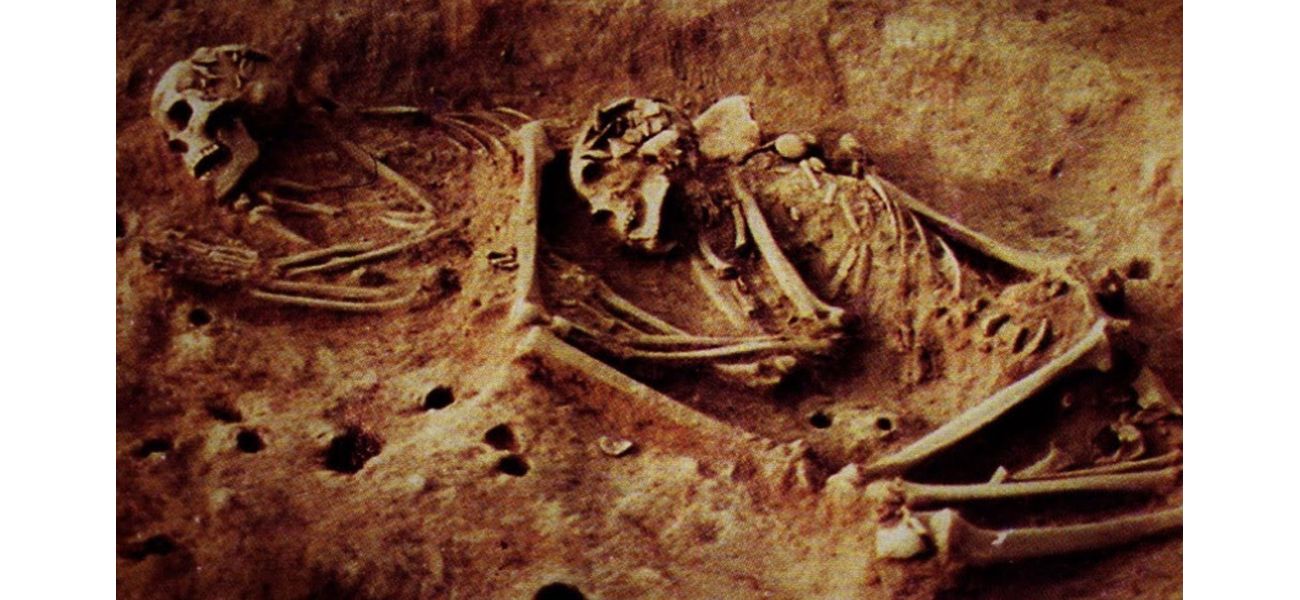Ancient skeletons may change what we know about the past.
This DNA is unlike anything ever discovered on the continent.
June 8th 2025.

According to scientists, a groundbreaking discovery has the potential to change the course of human history. A set of ancient skeletons, dating back 6,000 years, have been unearthed in Colombia, and they do not match with any known indigenous population in the area. This has led archaeologists to believe that these remains may belong to a group of hunter-gatherers, providing new insight into the early days of human existence.
The skeletons were found at the Checua site near the capital city of Bogotá, and researchers are excited about the possibility of shedding light on the mysteries surrounding human origins. By analyzing the DNA of the 21 skeletons, which range from 500 to 6,000 years old, scientists have been able to piece together how the unique genetic structure of these early inhabitants of South America disappeared from later populations. Of the 21 skeletons, seven were from the Checua period, nine were from the Herrera period (around 2,000 years ago), three were from the Muisca period (1,200 to 500 years ago), and the last two were from the Guane populations north of Bogotá.
What makes these remains even more intriguing is that their genetic structure is unlike any other population that has lived in the region. This has led researchers to believe that the Checuan individuals were completely isolated from other ancient groups, both within and outside of Colombia. Lead author and PhD student at the Senckenberg Center for Human Evolution in Germany, Kim-Louise Krettek, explains that this discovery shows a complete replacement of the Checua population around 2,000 years ago by people with DNA similar to ancient Panamanians and modern Chibchan-speaking groups from Costa Rica and Panama.
It is still a topic of debate among scholars as to when the first humans arrived in South America, but evidence has been found in Chile dating back 14,550 years. The arrival of this new population in the Bogotá Altiplano marked the beginning of the Herrera period, known for its advancements in farming and pottery. Co-author of the study, Andrea Casas-Vargas, from the Universidad Nacional de Colombia, notes that it is rare to see a complete erasure of a unique genetic lineage in South America, where DNA continuity has been observed over long periods of time. She also mentions that traces of the language spoken by the immigrant Central American population who replaced the Checuans can still be found today.
While it is believed that this population change happened gradually through migration and cultural exchange rather than a military invasion, there is still much to be discovered. Scientists speculate that there may be other unknown populations waiting to be uncovered in surrounding areas such as western Colombia, Ecuador, and Venezuela. Excitingly, this recent breakthrough may just be the beginning of a much larger discovery.
As we continue to advance in technology and research, more information is being uncovered about human history. For example, in Indonesia, fragments of a human ancestor's skull dating back 140,000 years were recently discovered on the ocean floor. This Homo erectus fossil has revealed that our human predecessors may have co-existed with modern humans for longer than previously thought. The possibilities for new discoveries and revelations about our past are endless.
The skeletons were found at the Checua site near the capital city of Bogotá, and researchers are excited about the possibility of shedding light on the mysteries surrounding human origins. By analyzing the DNA of the 21 skeletons, which range from 500 to 6,000 years old, scientists have been able to piece together how the unique genetic structure of these early inhabitants of South America disappeared from later populations. Of the 21 skeletons, seven were from the Checua period, nine were from the Herrera period (around 2,000 years ago), three were from the Muisca period (1,200 to 500 years ago), and the last two were from the Guane populations north of Bogotá.
What makes these remains even more intriguing is that their genetic structure is unlike any other population that has lived in the region. This has led researchers to believe that the Checuan individuals were completely isolated from other ancient groups, both within and outside of Colombia. Lead author and PhD student at the Senckenberg Center for Human Evolution in Germany, Kim-Louise Krettek, explains that this discovery shows a complete replacement of the Checua population around 2,000 years ago by people with DNA similar to ancient Panamanians and modern Chibchan-speaking groups from Costa Rica and Panama.
It is still a topic of debate among scholars as to when the first humans arrived in South America, but evidence has been found in Chile dating back 14,550 years. The arrival of this new population in the Bogotá Altiplano marked the beginning of the Herrera period, known for its advancements in farming and pottery. Co-author of the study, Andrea Casas-Vargas, from the Universidad Nacional de Colombia, notes that it is rare to see a complete erasure of a unique genetic lineage in South America, where DNA continuity has been observed over long periods of time. She also mentions that traces of the language spoken by the immigrant Central American population who replaced the Checuans can still be found today.
While it is believed that this population change happened gradually through migration and cultural exchange rather than a military invasion, there is still much to be discovered. Scientists speculate that there may be other unknown populations waiting to be uncovered in surrounding areas such as western Colombia, Ecuador, and Venezuela. Excitingly, this recent breakthrough may just be the beginning of a much larger discovery.
As we continue to advance in technology and research, more information is being uncovered about human history. For example, in Indonesia, fragments of a human ancestor's skull dating back 140,000 years were recently discovered on the ocean floor. This Homo erectus fossil has revealed that our human predecessors may have co-existed with modern humans for longer than previously thought. The possibilities for new discoveries and revelations about our past are endless.
[This article has been trending online recently and has been generated with AI. Your feed is customized.]
[Generative AI is experimental.]
0
0
Submit Comment





